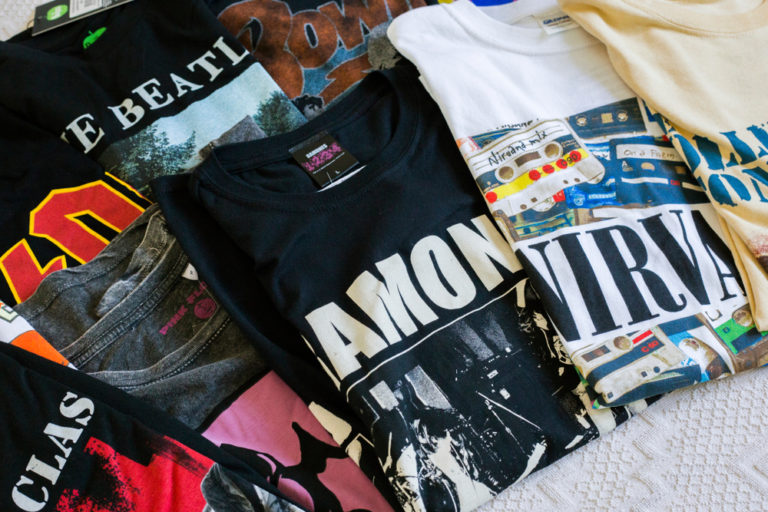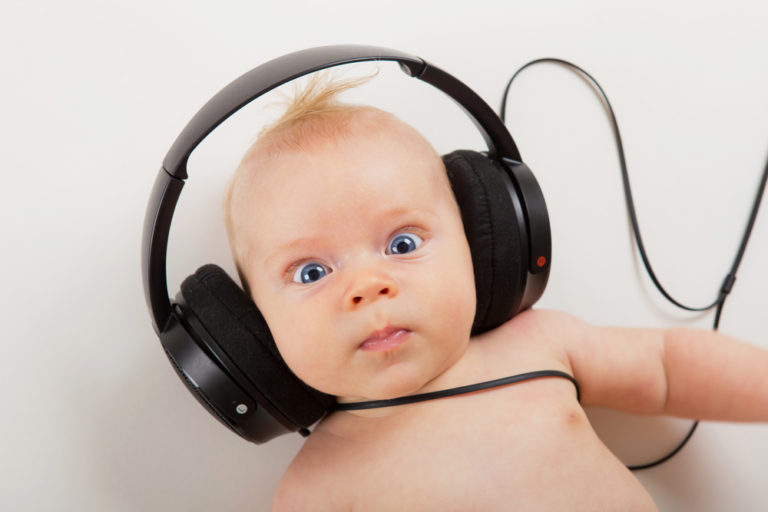Is Alternative Dead?
While it may seem that alternative rock has died, the evidence would indicate otherwise. The inherent culture of alternative music will always appeal to those that buck society’s status quo.
Post-2010, many would argue that Alternative has faded quietly into the music night, but the inimitable Dave Grohl put that to rest. An article in the New York Daily News from December 29th, 2013, stated that” that rock is dead.” Grohl responded by saying,” “speak for yourself… rock seems pretty alive to me.”
We will look at whether this is indeed true, and judging from the data below. There is little to convince me that alternative rock is indeed dead. It may be just the opposite!
A Quick History of Alternative Music
The term ‘alternative’ was coined in the 1990s and defined the punk-rock-inspired bands that didn’t fit mainstream rock music and labels. The punk ethos of the ’70s was the bedrock for the genre and sub-genres like grunge, Britpop, Gothic Rock, and Indie Pop that came later.
As a genre, Alternative challenged the status quo of society. It remained fiercely anti-commercial, and most bands were signed to independent labels, although a few bands like R.E.M and Jane’s Addiction were signed to major labels.
When the term ‘Alternative’ is discussed, it usually refers to the bands of the 90s that launched this genre. Bands like Nirvana, Alanis Morrissette, Stone Temple Pilots, Pearl Jam, Soundgarden in the U.S., and British’ grunge’ bands like Suede, Oasis, Pulp, and Blur held the reins on the other side of the Atlantic.
In the early 2000s, bands like The White Stripes, The Strokes, The Killers, and the Californication album from the Chilli Peppers sparked a revival.
Later than that, 30 Seconds to Mars, Muse, and Twenty One Pilotscontinued to drive the genre and their track “Stressed Out’ became the 25th track to achieve a billion plays on Spotify in 2015!
Considering the dominant music genres like E.D.M., hip-hop, R&B, and Adult Contemporary Pop that populate Spotify and other similar platforms, achievements like this demonstrate to anyone thinking that Alternative is dead in the age of music streaming – that they need to think again!
The Term Alternative – A New Definition
The reality of this term is more to do with an ‘alternative’ to mainstream music like pop and rock and discussing more edgy social issues like drug use, depression, personal identity and
“Alternative music is music that hasn’t yet achieved a mainstream audience; Alternative isn’t new wave any more; it’s a disposition of mind. Alternative music is any kind of music that has the potential to reach a wider audience. It also has real strength, real quality, real excitement, and it has to be socially significant, as opposed to Whitney Houston, which is pablum.”
—Mark Josephson, Executive Director of the New Music Seminar, speaking in 1988
Even though we are looking at whether this sub-genre of rock is dead in the current global music environment, for this discussion, we need to take a new look at the term’ Alternative.’
Alternative as a collective defines any music in any genre that varies from the existing mainstream. While many people believe that Alternative is purely about the punk/grunge/Indie groups, most music genres, including dance, metal, country, and hip-hop, also have a distinct ‘alternative’ segment.
By definition, the Alternative would now be the genre of music that opposes the mainstream, and on that premise, it would seem that the Alternative is far from dead!

The Evolution to Streaming and the New Alternative
Since the death of physical music albums with the advent of music streaming, the global music landscape has changed. The major streaming platforms offer such a wide variety of music in high definition and on-demand that listeners now have the most fantastic choice of music at their fingertips than at any other time in history.
In the old days, music was measured by its sales of singles or albums. Now it’s measure by streaming.
While there is no dispute on the numbers, the leading music stream is HipHop/ R&B by far. Interestingly, these two music styles have been combined in the streaming stats.
According to Statista, the most consumed music in the U.S.A. in 2020 was HipHop / R&B, with 31.1% of all music consumed falling into this category.
And the 2nd most consumed? E.D.M.? Pop? No. Rock.
As the next most popular ‘alternative’ to the mainstream, rock music is not lagging as some may believe.
Rock music was the 2nd most consumed music stream with 15,6%, with Pop (13.1%) and Country (7,1%) coming in 3rd and 4th respectively. In the streaming world, rock music would include all of the associated sub-genres as well.
(Source: https://www.statista.com/statistics/475667/streamed-music-consumption-genre-usa/)
What does this stat tell us? It shows that of all consumers using music STREAMING, HipHop/R&B is the most popular. But streaming isn’t the only way that people listen to music.
Rock is Dead – Or is it?
The famous line from The Who- “Rock is Dead, They Said” may appear to be true in the context of streaming figures, but a 2019 report from Nielsen clearly shows otherwise.
The Nielsen 360 report (2019) showed that more Americans were listening to rock music in 2019 than in 2015, and 80% of listeners polled listen to rock music either regularly or occasionally.
Nearly half of all music listeners (48%) are rock fans and are likely to be older in the 55+ range (77%), and 33% of rock listeners fall into the 33-54 range.
The streaming figures would have you believe that Millenials and Gen-X’ers don’t listen to rock or its sub-genres, but this is not the case at all.
48% of alternative rock listeners are Millenials, and 33% are Gen X, while the classic rock appeal lists 34% as Millenials, 33% Gen X, and 28% are Boomers and beyond.
If you think that the world ONLY listens to streaming music, think again. A vast number of music fans still prefer physical music outlets like vinyl and CD, and radio!
25% of alternative rock fans use on-demand streaming, and 26% use radio.
Interestingly enough, AM/FM over the air radio remains the top source (44%) for new music discovery, and 26% use AM/FM streams for the same purpose.
Rock Radio – The Audience is Growing
Listenership grew by around 500 000 listeners per year from 2014 to 2018, with total numbers improving from 73million in 2014 to 74 million in 2018.
More than 1500 rock radio stations in the U.S. cover the rock universe from classic rock, alternative rock, mainstream rock, triple-A, and active rock.
Classic rock dominates the numbers with 609 stations and 6th overall among all radio formats, and guess who comes in second?
Alternative with 312 stations and ranked 15th overall.
Is alternative dead? Hell no!
In a world where digital streaming appears to be the juggernaut, the more traditional outlets of rock music still have an influence, and that is growing.

The Great Music Hand-Me-Down
As a father of two sons, a lot of the music I listen to currently and did listen to are on their playlists. Metallica, Rob Zombie, Z.Z. Top and the more classic rock of the era I grew up in have taken root in their lives.
While they aren’t using cassettes and vinyl, their tablets are packed with older rock music, and this is where many, many new fans are getting their music from.
Their parents!
Alternative and rock music’s sound and message still have appeal to many younger generations. While the impact of HipHip and R&B may be the dominating sounds these days, a massive amount of new fans in the Millenial, Gen X, and Boomers are taking stock of the much-loved collections they find at home.
Brought up listening to ’70s, 80’s and 90’s rock, these new ears lap up the sound and style of earlier rock and connect it back to more modern bands they hear and look to discover more. There is still something magical about sitting and listening to vinyl or CD on a stereo system.
For parents, the passion and excitement of sharing music with their kids is a chance to share your memories of the time in your life when you were listening to those songs.
The Streaming Structure Is Designed For Discovery
Using their access to and knowledge of the streaming services to find more music similar to this genre connects them to a wider variety of rock and alternative rock. The structure of the streaming channels automatically groups and suggests matching options to them and leads them inexorably to discovery.
There is another crucial factor to consider here, and that is the monster that is social media. Sharing and talking about music becomes easier to share and spread across the universe that is Social Media. Whether it’s Facebook groups, Whatsapp Chats, YouTube, or TikTok, digital media provides the tools for sharing and exploration on a scale never seen before.
Typing in ‘Alternative’ or ‘Rock Music’ on Google or Itunes / Spotify / Deezer / Tidal will return a stack of results, and from there, it’s just a question of taking the time to explore and find the music you like.
Sharing with like-minded others leads to more choice, suggestion, and recommendation and the subsequent discovery of more bands and songs.
While some may believe that streaming has killed rock and its associated genres, it’s evident that this is not the case.
Live Tours Worldwide – Who Were the Biggest in 2020?
The Top 7 biggest tours (revenue in USD) are :
- Elton John ($87.1 M )
- Celine Dion ($71.2 M)
- Trans-Siberain Orchestra ($58.2 M)
- U2 ( $52.1 M)
- Adam Lambert & Queen ( $44.6M)
- Post Malone ( $40.3 M)
- Eagles ($33.6M)
4 out of the 7 are rock bands and only 1 rap act (Post Malone).
(Source: https://www.statista.com/statistics/278378/the-most-successful-music-tours-worldwide/)
Considering the state of the world with Covid in 2020, 57% of the top 7 touring acts were from the rock genre. If you throw Elton John & Celine Dion in the pop-rock genre, that increases to 85%!
Rap only holds 14% in that list!
If you think that the audience at those shows were only the older 55+ generation – think again!

Alternative Lives!
With the advent of streaming and the diversification of music from a single genre into multiple sub-genres for classification on those platforms, listeners can fine-tune their selection of music and artists.
With this in mind, I believe that Alternative has been re-classified into more specific labels rather than simply one umbrella term.
In the past, Alternative referred to the punk rock bands of the 70s and 80s, the grunge bands of the ’90s, and similar sounding bands that followed.
In the new era of music, the term alternative has been redefined to ‘classic’ Alternative, which relates to the bands and styles above but expanded to include ‘alternative’ bands in genres not usually associated with this term.
Dance, Country, Metal, and Hip-Hop all feature alternative artists that remain anti-establishment and anti-conformity and strive to connect with audiences that relate to the darker issues that popular music either doesn’t or won’t address.
With almost zero censorship in streaming services and more mainstream platforms like Youtube, artists can now openly express their thoughts and experiences that resonate with large population segments.
While these issues are not new, the ability of artists to communicate with a far greater audience thanks to the proliferation and availability of streaming services around the world offers both new and old artists the opportunity to connect with a brand new listenership.
The Future Of Alternative
As our world and society ( most of them) progress into a less restrictive outlook on music and the issues it seeks to address, the age-old messages of anti-establishment, anti-authority, and non-conformity will remain as relevant as ever.
And therein lies the key to Alternative’s survival and regeneration. Relevance.
Anti-war and anti-government sentiment is still very much alive, as are the ever-increasing topics of gender choice and lifestyle, it’s changed focus to the issues of the day, and this was the natural beauty of Alternative.
Like all the other genres, it has had to evolve with the times and how people now consume music. The ‘hand-me-down factor will have more kids listen to the music that their parents enjoyed. The ability to share music at will and often for the same reason will continue to stabilize and grow Alternative’s appeal to future generations.
After all, “With the lights out, it’s less dangerous,” and other iconic lyrics will live on, and with it, Alternative music will remain as present and relevant as it ever was.








